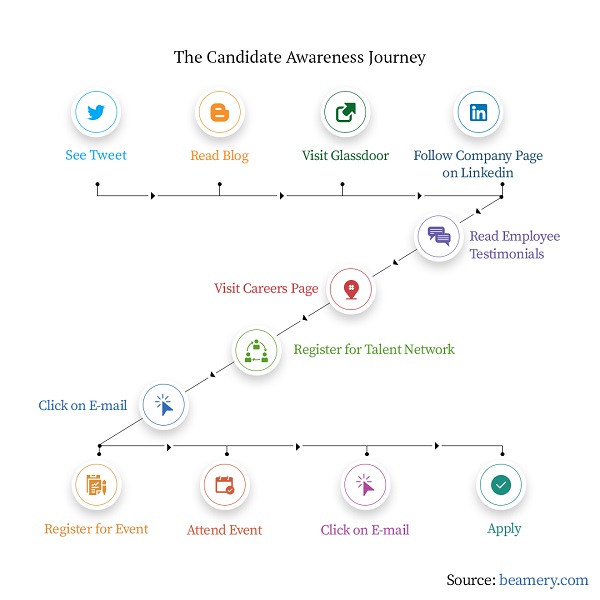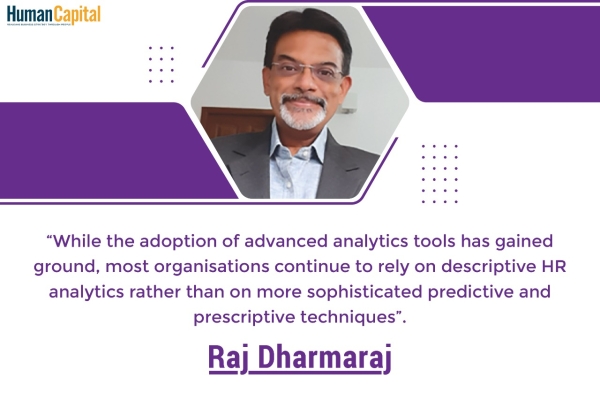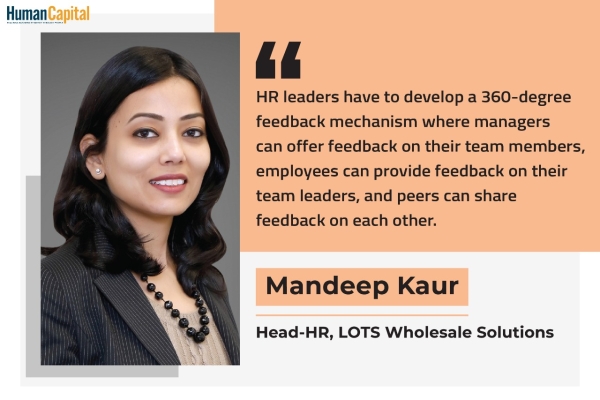When it comes to attracting the best talent, many HR professionals are still treading the traditional and rudimentary path.
A few years ago, I got a call from a consultant for interviewing with an organisation I had heard about, but of which I did not know the details. As usual, I turned to the internet to find out more about the organisation, using places like Glassdoor, the company website, Quora, etc. I read what the employees and ex-employees shared online, but obviously with a pinch of salt.
I was given a link to update my profile and boy; it was made when MS Paint ruled the world! It was the kind of form that companies use to gather information about the candidate, family, education, experience, blood group, shoe size, name of the pet, and whatnot! Let’s call it the “evil form”. I went on to watch Netflix as I had decided this was not the type of place I would want to work. The next day, I called the consultant and expressed my intention to be excluded from the process. The person on the other end obliged, and the transactional process ended. What stayed with me? My experience—the candidate experience! If I ever have to deal with that brand, I will be cautious.
Candidates are practically customers. Virgin Media found the hard way that a good 18% of rejected candidates were also its customers. Moreover, according to a survey conducted in 2018, 60% of workers in the US reported that a negative experience during the hiring process could affect their positive perception towards the company.
It takes a lot of work to create and deliver a signature candidate experience. The team that designs the experience must walk every step of the candidate journey, right from the first time someone thinks of the brand, visits the company page on LinkedIn, Glassdoor, or career sites, to the kind of communication that will take place throughout the process, and finally when either an offer is made or a closure note is sent.
As my above story illustrates, the candidate experience starts a long time before hiring begins. However, HR leaders fail to note this important fact more often than not. Social platforms have gained significance in brand selection both from the perspective of the consumer and the potential employee. Yet, when it comes to attracting the best talent, HR functions keep treading the traditional and rudimentary path. But the learning is this: Don’t solve the problem until you understand what the problem is. Taking action before absorbing information can severely impact the desired outcome. Sometimes, it can even be detrimental.

The best place to begin is to talk to those who are involved in the journey. Talking to your new joiners could also be a place to start, but it shouldn’t be the only place. The list should include those who applied and were rejected, those who did not wish to join, and your HR teams who manage all the touchpoints: recruiters, vendors, onboarding team, relocation team, IT, transport team, etc.
I am providing a laundry list in no particular order, but it is, however, a must-have list to elevate the overall candidate experience.
● The first look: Organisations must ensure that their jobs are easy to find and that the expectations, requirements, and must-have skills are clearly listed. Whether it’s advertisements, social media or the company website, the first look is key to finding the right candidates.
● The lure: Job ads must attract candidates. So make them crisp and interesting.
● Easy to find: Clear and concise instructions lay the foundation to exceptional candidate experience.
● Brand amplification: Highlight your employee-related values on the company website, career webpages, and social sites like LinkedIn and Facebook.
● Do you have the “evil form”? Simplified forms help both candidates and recruiters alike. Organisations must leverage available technology, including auto-filling, LinkedIn sign-on, etc.
● Mobile-friendly: The form should be easy enough to fill out on mobile devices.
● Leverage technology: AI systems have made life easier in many ways. Organisations can automate online and mobile device chats with candidates to answer questions during their application process.
● Constant communication: When candidates submit their application, even if you send them a generic thank you email, they will be reassured. Also, use names, not reference numbers. Moreover, can you make the communication go through from an email address that isn’t a bot? You are now a thinking human!
● Timing is the key: Communicate the rejection or acceptance promptly and clearly.
● The precision of communication: Send a calendar invitation with precise and complete information on all aspects, including:
» Whom will they meet?
» Who will be present at the interview?
» Mode of the interview – inperson or video-based?
» Duration of the interview
» Format – case study and/or conversation?
» Is there a dress code?
» Directions – GPS, map, etc.
» Where to park?
● Time to deliver: The onboarding day is your opportunity to deliver. As they say, delivery is the best sales pitch!
● Celebrate with them: Using social media, companies can use hashtags and let employees share their experience with friends and family. However, ensure that the company pictures are posted only through official company accounts.
● An element of surprise: A letter and a small gift for the significant others of candidates will put a smile on their faces. Think creatively, and be different.
● Get to know them: Once onboarded, work towards getting to know the intrinsic drivers and career aspirations of your employees.
● Keep the feedback loop on: Keep listening to the feedback, analyse the outcomes, and take actions. Pat yourself when candidates who aren’t offered jobs say they were professionally and adequately assessed.
Final musings
Organisations driven by candidate experience, vision, and strategy will understand that the learning journey is never over. You need to periodically and religiously assess your processes.
The above pointers are helpful when it comes to making changes in your recruitment process. However, it still won’t be enough to create and project a signature experience until you really care about the candidates. How do you communicate a delay or reschedule with the candidate? Offering them coffee or free lunch is par for the course. Think new! How about a gaming zone? You may also send them on a site tour—the idea is to engage them and make them comfortable. Also, use design thinking to make sure everything is perfectly designed for exceptional candidate experience, from application to onboarding. Finally, be empathetic, and do what’s right.

Has COVID-19 forever changed the way we live and work?
Trending
-
SBI General Insurance Launches Digital Health Campaign
-
CredR Rolls Out 'Life Happens' Leave For Its Employees
-
Meesho Announces 30-Week Gender-Neutral Parental Leave Policy
-
Microsoft Unveils Tech Resilience Curriculum To Foster An Inclusive Future
-
60% Indian Professionals Looking For Job Change Due To COVID: Survey
-
SpringPeople And Siemens Collaborate For Digital Transformation Push
-
86% Professionals Believe Hybrid Work Is Essential For Work Life Balance: Report
-
Almost 1 In Every 3 People's Personal Life Affected Due To Work Stress
-
Meesho Rolls Out Reset And Recharge Policy For Employees
-
80% Of Talent Leaders & Academics Say Pandemic Changed Skill Needs For Youth: Report
-
Hero Electric Rolls Out 'Hero Care' Program For Employees
-
Human Capital In Collaboration With ASSOCHAM Hosts Virtual Conference
-
IKEA India, Tata STRIVE Collaborate To Create Employability And Entrepreneurship Opportunities
-
SAP India, Microsoft Launch Tech Skilling Program for Young Women
-
DXC Technology, NASSCOM Collaborate For Employability Skills Program
-
Lenskart To Hire Over 2000 Employees Across India By 2022
-
Mindtree Launches Learn-and-Earn Program
-
Tata AIA Extends 'Raksha Ka Teeka' To Its Employees
-
Swadesh Behera Is The New CPO Of Titan
-
NetConnect Global Plans To Recruit 5000 Tech Professionals In India
-
Hubhopper Plans To Hire 60% Of Indian Podcasters By 2022
-
Corporate India Needs More Women In Leadership Roles: Report
-
Aon to Invest $30 Million and Create 10,000 Apprenticeships by 2030
-
Tech Mahindra Launches ‘Gift a Career’ Initiative for Upskilling of Youth
-
40% Women Prefer Flexible Working Options in Post-COVID World: Survey
-
3 out of 4 companies believe they can effectively hire employees virtually: Report
-
Vodafone , CGI and NASSCOM Foundation launch digital skills platform
-
Odisha: Bank, postal employees to deliver cash for elderly, differently-abled persons
-
Skill India launches AI-based digital platform for "Skilled Workforce"
-
Hiring activity declines 6.73% in first quarter: Survey
-
70% startups impacted by COVID-19 pandemic
-
Bajaj Allianz Life ropes in Santanu Banerjee as CHRO
-
Over 70 Percent MSMEs look at cutting jobs to sustain businesses
-
93 Per Cent employees stressed about returning to office post-lockdown
-
Johnson & Johnson India announces family benefits for same gender partners
-
Indian firms turning friendly towards working mothers
-
Welspun India names Rajendra Mehta as new CHRO
-
Wipro partners with NASSCOM to launch Future Skills platform



Human Capital is niche media organisation for HR and Corporate. Our aim is to create an outstanding user experience for all our clients, readers, employers and employees through inspiring, industry-leading content pieces in the form of case studies, analysis, expert reports, authored articles and blogs. We cover topics such as talent acquisition, learning and development, diversity and inclusion, leadership, compensation, recruitment and many more.
Subscribe Now












































Comment